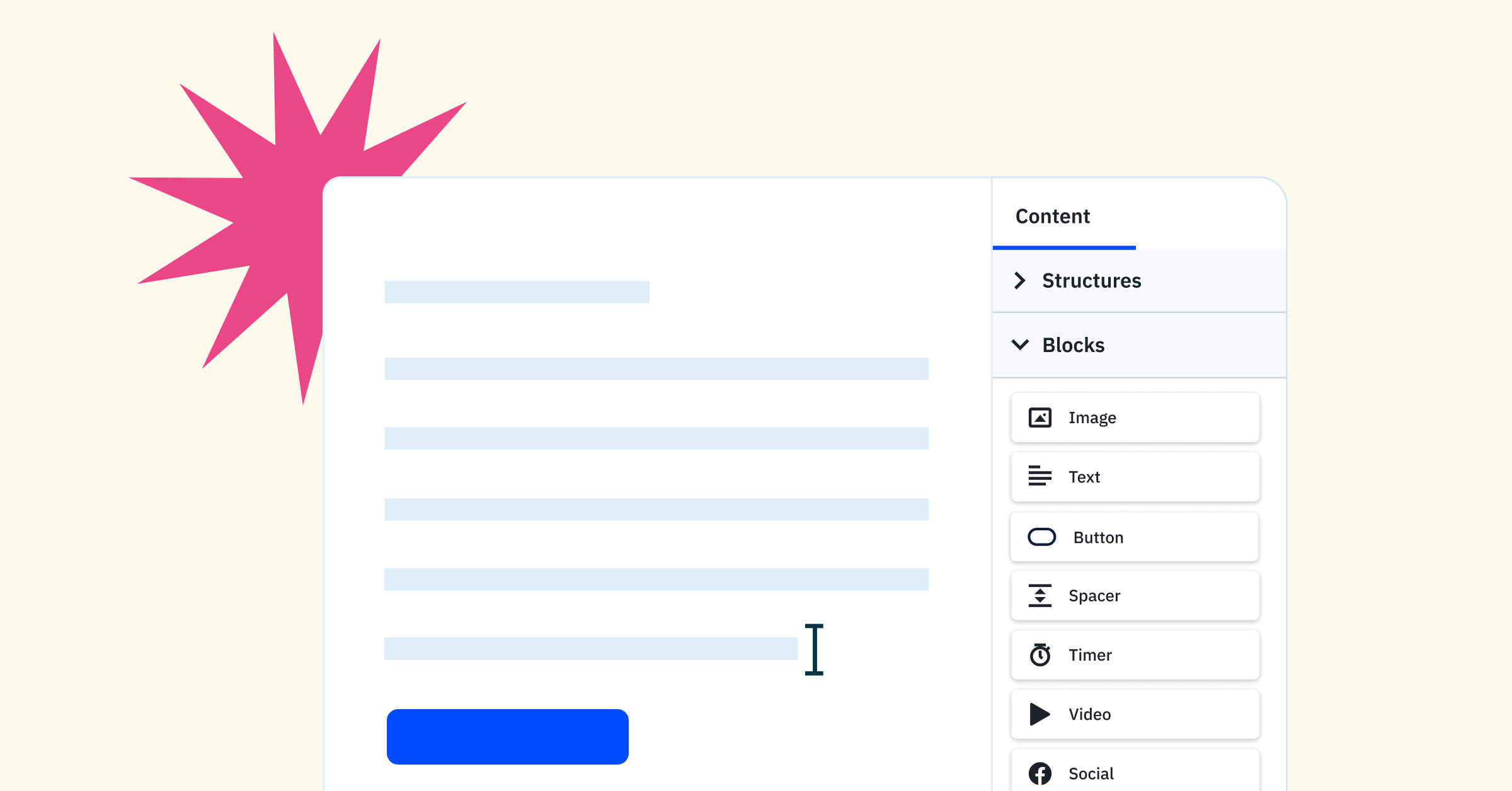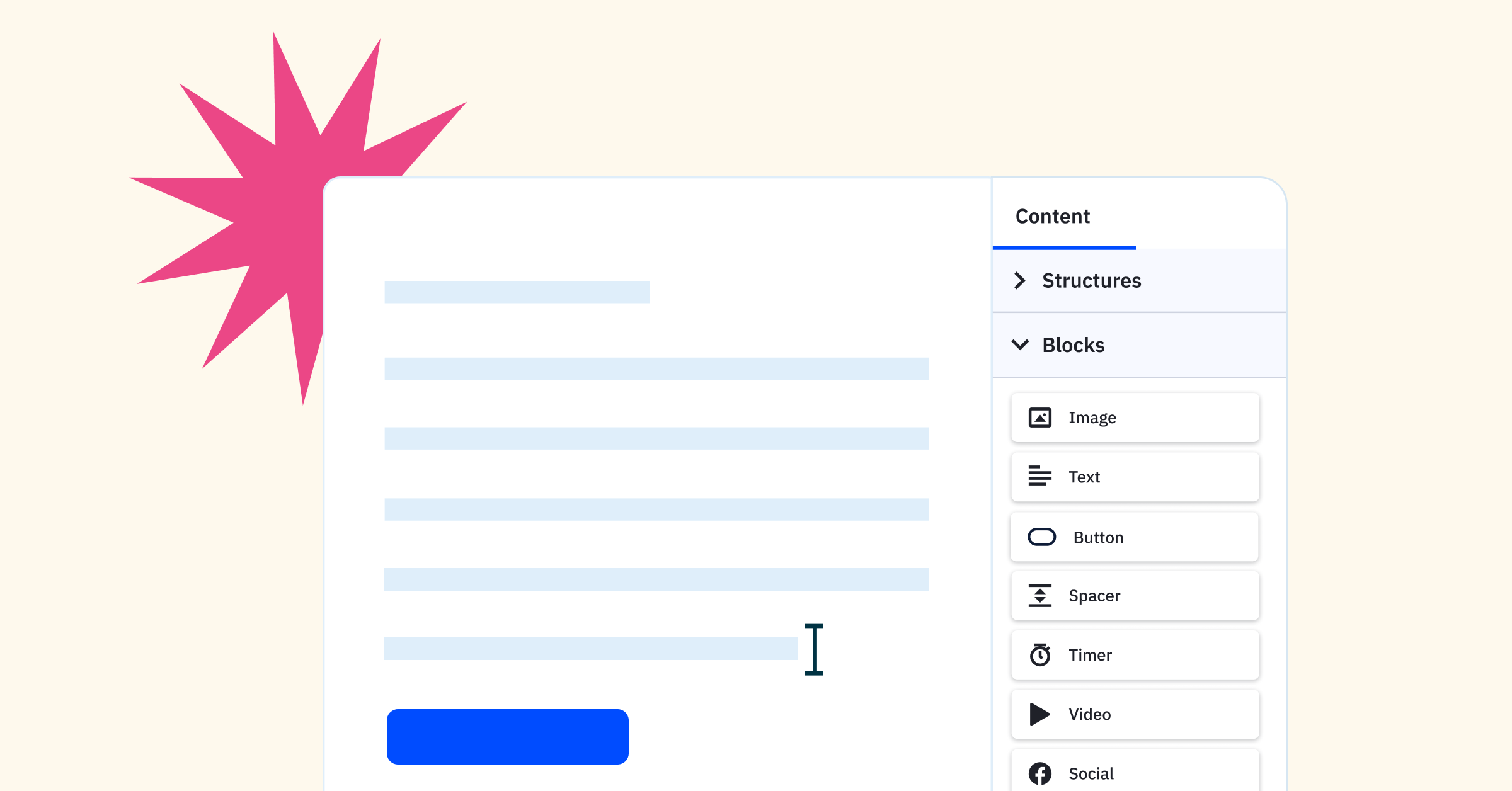This post was updated on September 8, 2022.
Email marketing may not be dead, but nobody can deny it’s become a saturated medium.
Consumers get messages from their favorite brands every day, and their inboxes are flooded. Recipients can easily ignore your emails, resulting in poor open rates and a less-than-desirable return on investment.
Today’s buyers want personalization, but that introduces a challenging dichotomy for ambitious brands looking to serve that desire:
How can we personalize emails while still working at scale?
The answer: dynamic email.
In this article, you’ll learn how dynamic email content can help you bridge the gap between high-volume email marketing and personalized customer communications.
Table of contents
- What is dynamic email?
- What are the benefits of dynamic email content?
- What are the different types of dynamic email content?
- How dynamic email content works
- How to add dynamic content to emails
- Common mistakes when using dynamic email content
- What are some examples of dynamic email content?
- How to combine dynamic email content with email automation
- Frequently asked questions
What is dynamic email?
Dynamic content in email marketing describes any email content that changes based on the subscribers’ data, preferences, and behaviors.
So, you’d send out a marketing email to your entire database, but certain content modules within that email would be dynamic, changing based on a characteristic you determine.
Let’s say your company is an online shoe retailer, and you’re launching a Cyber Monday sale.
You prepare the copy and creative around the campaign, all of which are the same for each recipient. What changes are the specific products recommended (that’s the dynamic part).
The simplest example would be to segment by gender: men receive recommendations for male footwear, and vice versa.
With dynamic content, you can personalize specific aspects of an email—text, visuals, or calls to action—to target particular subscribers and increase engagement.
What are the benefits of dynamic email content?
Dynamic email content adds value to your email marketing strategy by ensuring your contacts see the information they need.
With more relevant content, you can increase the effectiveness of your email campaigns. Here are 3 benefits of dynamic email content:
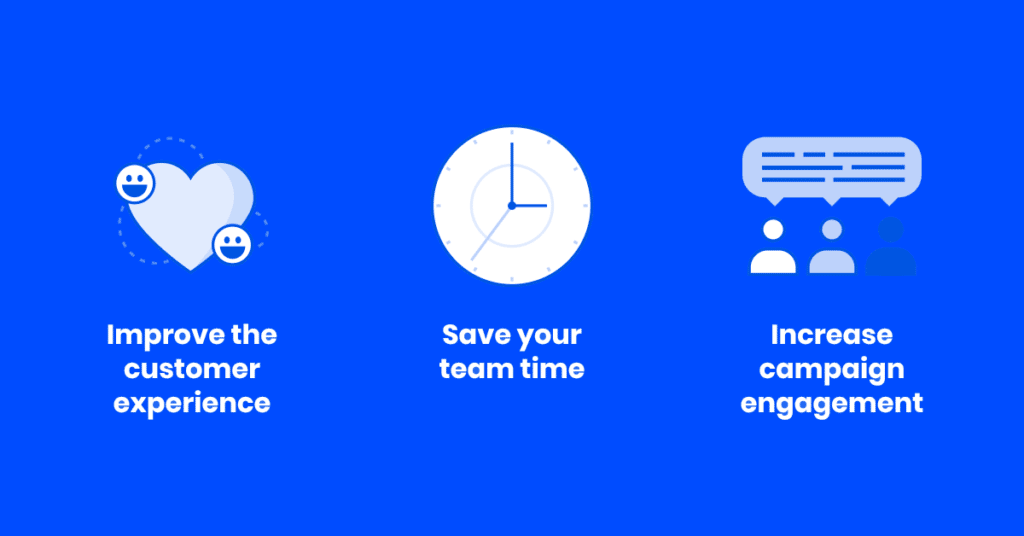
1. Improve the customer experience
Customer experience statistics show that you need to put your customers first. Dynamic content offers an opportunity to cater to each customer. You can personalize email content to reflect a subscriber’s geographical location, interests, and purchasing history.
2. Save your team time
Dynamic email content helps your team create personalized experiences at scale. No more crafting separate campaigns for different audience segments.
Instead of creating a different email to talk to your leads, customers, and advocates, you can develop 1 email and switch the content based on the specific segment. This level of automation frees up your time to focus on email strategy, not repetitive tasks.
3. Increase campaign engagement
Your customers prefer to interact with content that speaks directly to them. With relevant content in your subscribers’ inboxes, they are more likely to open the messages and take action. More engagement for your brand means more opportunities to nurture relationships and sell products.
What are the different types of dynamic email content?
Dynamic email content is unique because you can make specific brand recommendations to your audience. You can point new leads to a landing page to purchase your product while directing your brand advocates to an upsell offer with a one-time coupon code.
1. Text
Marketers using dynamic email content for the first time usually start with text (aka copy). It’s a simple but effective way to personalize your message to different subscribers.
There are a few ways we can take advantage of dynamic copy:
- Email subject lines
- Email body copy
- Calls to action
Even something as simple as using the recipient’s name in communications could be considered dynamic content, like this example:
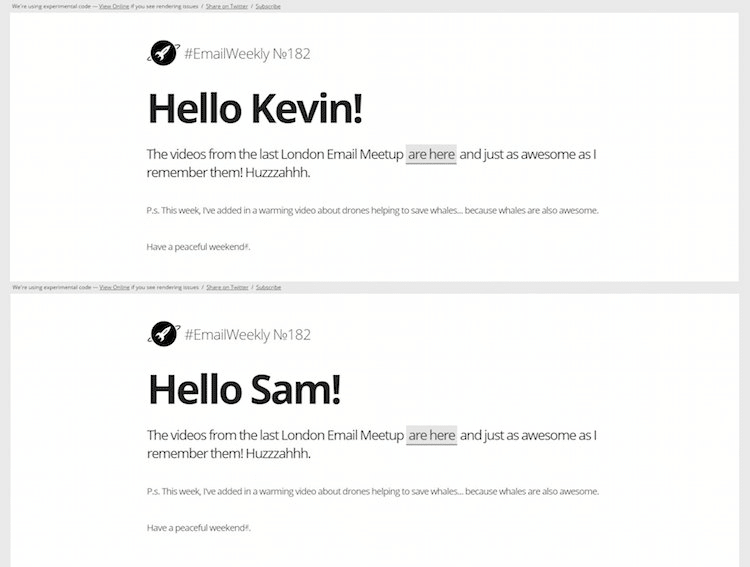
2. Visuals
Most of your emails are likely to include some kind of visual component. You’ll add images, illustrations, videos, product recommendations, and maybe even GIFs.
Not all of your visual components will resonate with each customer, and this is particularly true for product recommendations by ecommerce brands.
Take this marketing email from ASOS.
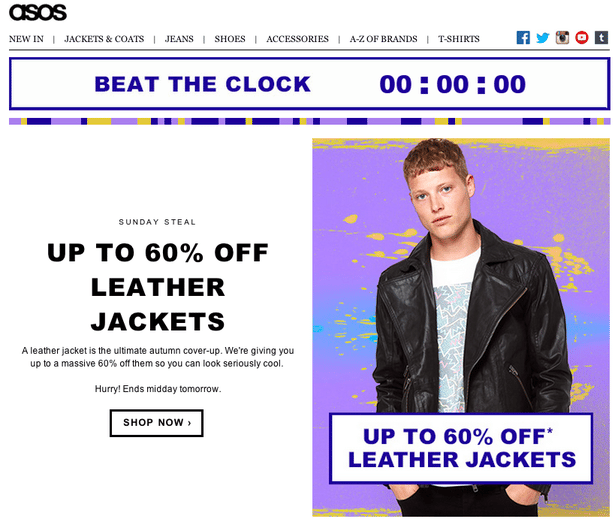
A great example of dynamic visual content would be to use a different image based on the customer’s gender preferences.
3. Calls to action
The purpose of a call-to-action (CTA) button or link is to grab your subscribers’ attention and encourage them to take action. Customizing CTAs helps boost your click-through rate—leading to more sales for your brand.
Many times, CTA’s are a combination of the 2 previously mentioned elements: copy and visuals.
You can play with the copy in the CTA based on buyer characteristics, but you can also experiment with design elements like colors and placement.
How dynamic email content works
Creating great dynamic email content means going above and beyond for your subscribers. Customer experience expectations are already high, so your team must find new ways to delight your audience.
The answer: delivering personalized content to your customers.
Step 1: Collect Data
In order to personalize your email marketing with dynamic email content, you will need access to customer data. You can collect better customer data in 3 ways:
- Customer interviews: Speak directly to your customers about the outcomes they’d want from using your product or service.
- Customer feedback: Give your customers other ways to interact with you, such as email marketing data (opens, clicks), your sales CRM, surveys, quizzes, and website live chat.
- Community research: Aggregate review data from social listening tools and major platforms and look up important keywords on social media platforms.
Learn more: Read our guide to identifying the needs of your customers.
Step 2: Segmentation
Customer segmentation plays a key part in personalizing your dynamic email content. Your goal is to group subscribers in a way that will increase your email engagement.
Using the customer lifecycle is beneficial when determining your customer segments. The customer lifecycle describes the stages consumers enter when they consider, purchase, and remain loyal customers of your product. It shows you how to engage with customers in the buyer’s journey.
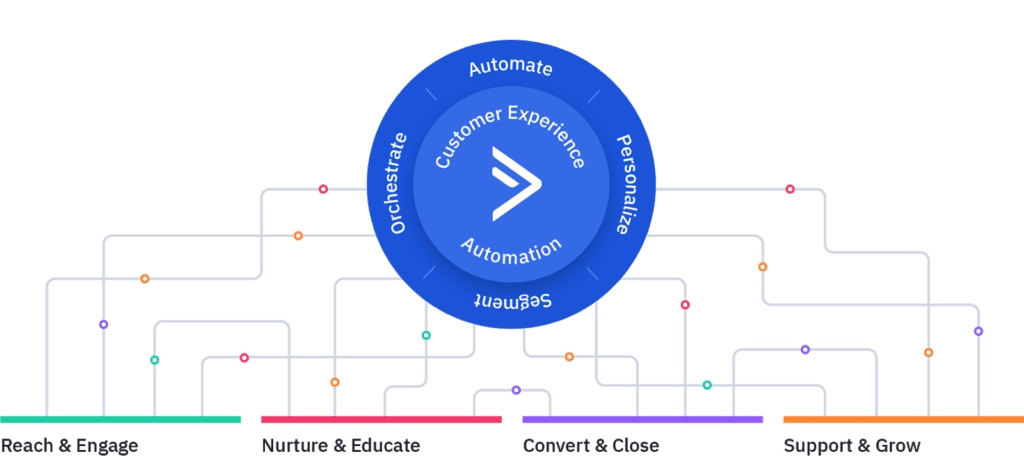
You can create customer segments that match the customer lifecycle. Here are some recommendations for your business:
- Reach & Engage: Focus on new visitors to your website. They may land on your site from a Google search, Facebook ad, or a mention from an influencer.
- Nurture & Educate: Group new leads interested in your brand. These consumers want to learn how your product can address their specific needs.
- Convert & Close: Seal the deal with eager consumers. You can send them personalized calls to action to get them to the checkout cart.
- Support & Grow: Transform customers into brand advocates. You can delight each customer by emailing relevant product announcements and offers.
Step 3: Customize dynamic email messages for each segment
After selecting your customer segments, the next step is to decide how you will customize the email. There are limitless ways to target your subscribers with personalized content.
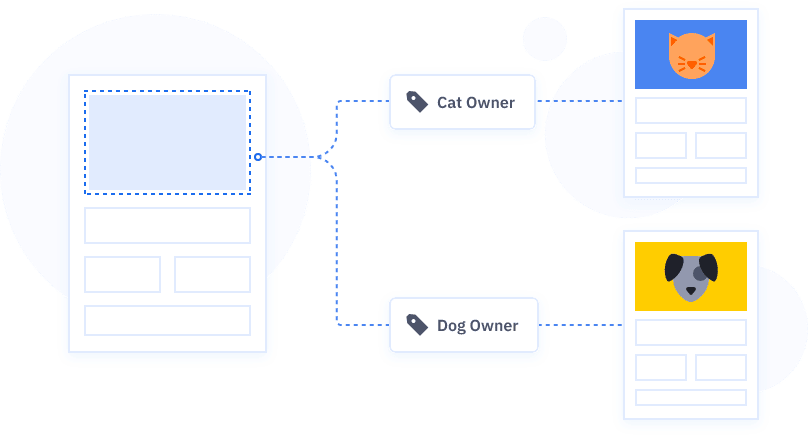
Consider the following 4 customization options:
1. Demographics
Using basic demographics is 1 of the easiest ways to customize your messaging. Here are a few examples of customer demographic information:
- Age
- Gender
- Geographical location
- Marital status
- Education level
- Professional occupation
2. Psychographics
Psychographics targets a customer based on their beliefs, values, and interests. Depending on your business type, you may customize your message to fit their political views, hobbies, or food choices. You can collect this type of data through email surveys, website quizzes, or customer interviews.
Craft emails that open hearts, minds, and wallets with our FREE email copywriting templates!
3. Subscriber preferences
Your customers know what they want to see from your brand. So, ask them directly to choose the type of content they would like to receive.
You can give subscribers an option to express their preferences when signing up for your newsletter. Or you can include a link to a preference center at the bottom of your emails.
4. Behavioral data
Behavioral data looks at specific patterns made by a customer’s actual actions. You can customize an email to fit a subscriber’s past purchasing history, website activity, or email engagement. Understanding customer behaviors is an opportunity to recreate more positive brand actions.
How to add dynamic content to emails
Today, many customers want a highly personalized shopping experience with product recommendations, special offers, and custom services. You can nurture brand relationships and outshine your competitors with dynamic email content. Macy Storm, a content writer at WebFX, agrees:
“Dynamic email content will help your business get more from your email marketing campaigns. You’ll create more tailored content that helps you earn conversions for your business.”
In ActiveCampaign, you can create dynamic email content within the email designer. Hover over any content block to display a gear button, then select “Make conditional” to begin.
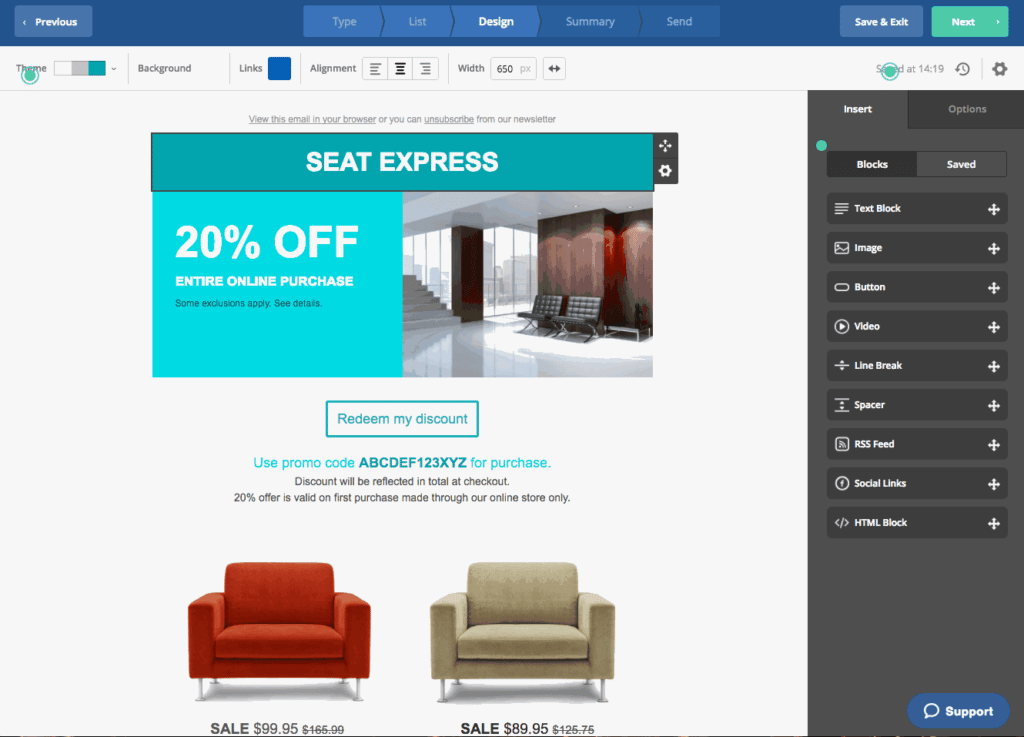
Then, you will see a Conditional Content modal window. You can create multiple conditions to determine with whom to share this specific content. For instance, you can display content to subscribers in a particular country. Or you might show content based on a specific tag.
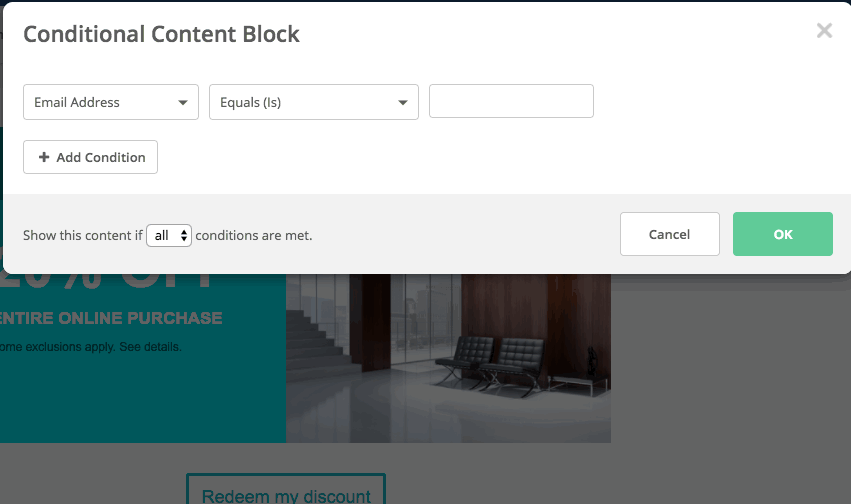
After setting your conditions, you can hover over your content block to see a pop-up stating the conditions set.
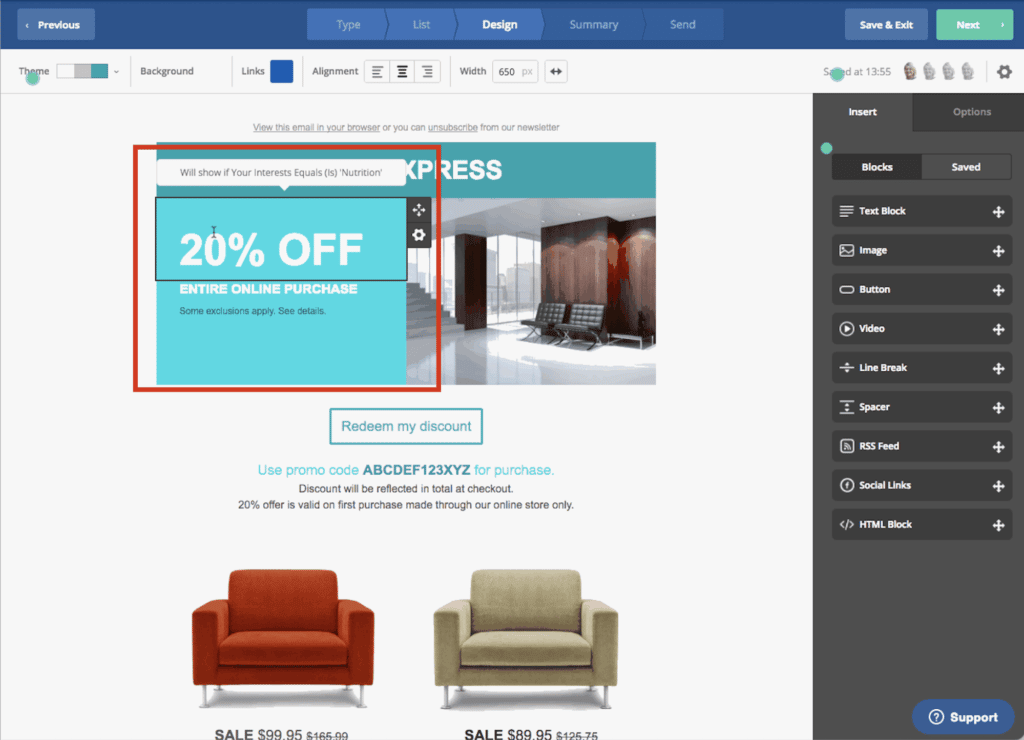
One content block can have multiple conditions for your subscribers to meet. Also, you can decide if your content will appear if all or any of the set conditions are met.
Common mistakes when using dynamic email content
Like any marketing campaign, dynamic email content is less effective when implemented without a strategy. Work with your team to create baseline rules before using dynamic content in email marketing. Below are a few common mistakes.
Using inaccurate data
Dynamic email content works best when you have accurate data about your subscribers. You don’t want to make the mistake of sending dog-related pet toys to a cat owner. So, your team should do an audit of your customer data. You also can ask subscribers to update their email preferences.
Implementing multiple dynamic content types at once
With any new tool, you’ll want to resist the urge to try every feature at the same time. Teams make the mistake of changing every single content block in an email. Instead, you’ll want to focus on what content needs personalization based on the customer segment. Aim to change only 1 or 2 content blocks per email.
Failing to track metrics
Your campaigns must be measured to track the progress of your dynamic email content. You’ll want to analyze the click-through rates of different content blocks. That way, your team better understands your subscriber’s activities and interests.
Dynamic Email Examples
Dynamic email content creates a memorable experience for your customers. Here are some examples from brands to inspire your strategy.
1. Outdoor footwear retailer focuses on a customer’s occupation to send relevant content
Timberland sends dynamic email content according to its subscribers’ profession. This marketing email showcases multiple work boots for people with outdoor jobs. The products can withstand different weather conditions, making them ideal for construction and manufacturing workers.
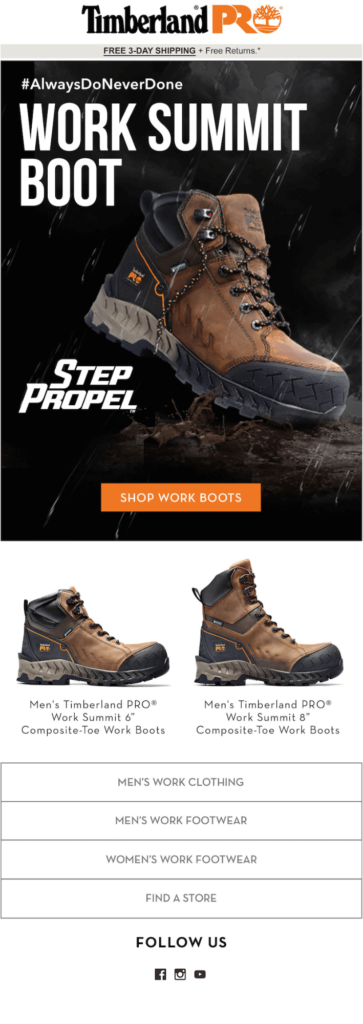
2. Sports equipment company creates weather-related messaging
Brooks personalizes content based on the subscribers’ location and the current weather conditions. Their brand team uses a different image, text, and call-to-action button for hot weather and rainy days. It’s easier for consumers to see themselves using the product in their climate.
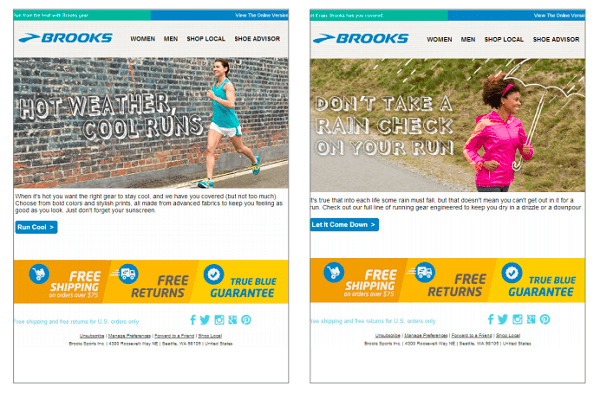
3. Online pharmacy engages subscribers using past purchasing history
Chemist Warehouse delivers replenishment emails to prompt customers to re-order products. The dynamic email content includes text and images of the product purchased along with other product suggestions and current pricing. Plus, the call-to-action button leads customers to a pre-stocked shopping cart.
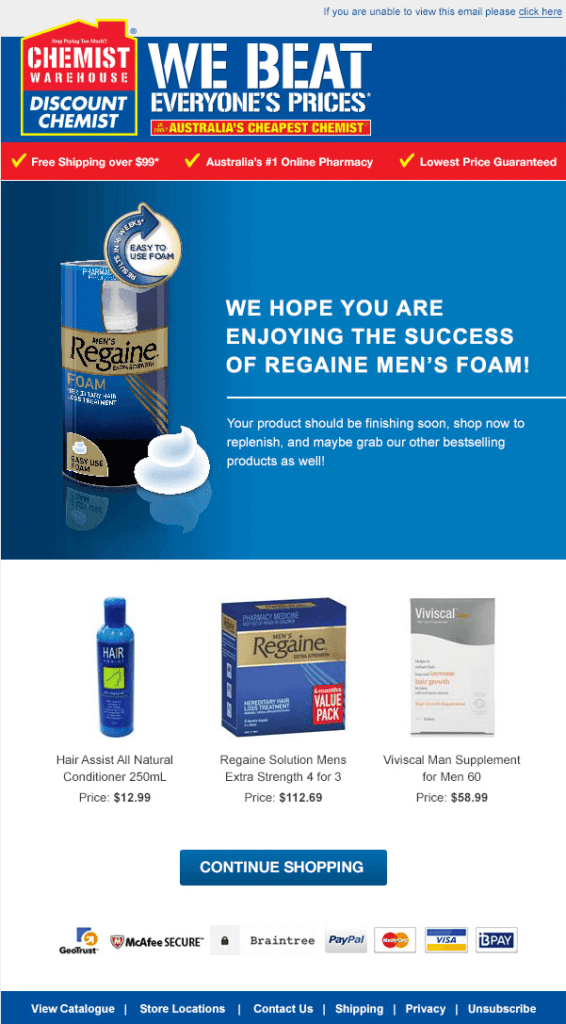
4. Membership community saves time
The Rocky Mountain Elk Foundation (RMEF) grew from a membership of almost 2,500 in 1984 to more than 235,000 members with 500 chapters. In the past, if RMEF wanted to send an email to a specific segment of its membership, its team had to pull a report from the database to get a list of the right email addresses. This complicated process resulted in much wasted time and subscribers receiving 3 emails in a single day.
Now, the conservation organization easily sends targeted messages to its recipients based on their membership status. Non-members receive a call to action to become a member with an explanation about fees, while members see a call to action to donate. The RMEF team also saves time because they don’t have to create 10 different emails.

Additional dynamic email content examples include asking subscribers to:
- Reply to an invitation
- Fill out a questionnaire
- Browse a catalog
- RSVP to event
- Fill out surveys
- Take a quiz
- Respond to comments
- Browse images in email
How to combine dynamic email content with email automation
Dynamic email content and automation are powerful duos to deliver relevant content to your audience within an automated customer journey. Not only will your subscribers get personalized messages, but they also will receive your message at the right time within the lifecycle.
Using dynamic email content in your welcome series is a good starting point. Instead of delivering a generic welcome message to every subscriber that joins your newsletter, you can add customized content based on where they subscribed.
If they signed up after attending your latest webinar, you could include content from your presentation. Or, if they subscribed while on a specific product page, you can add more details about the product in the welcome message.
You can also replicate this same technique for your promotional, post-purchase, and re-engagement email series. ActiveCampaign makes it even easier with automation recipes. These are pre-built automation templates that you can import into your ActiveCampaign account.
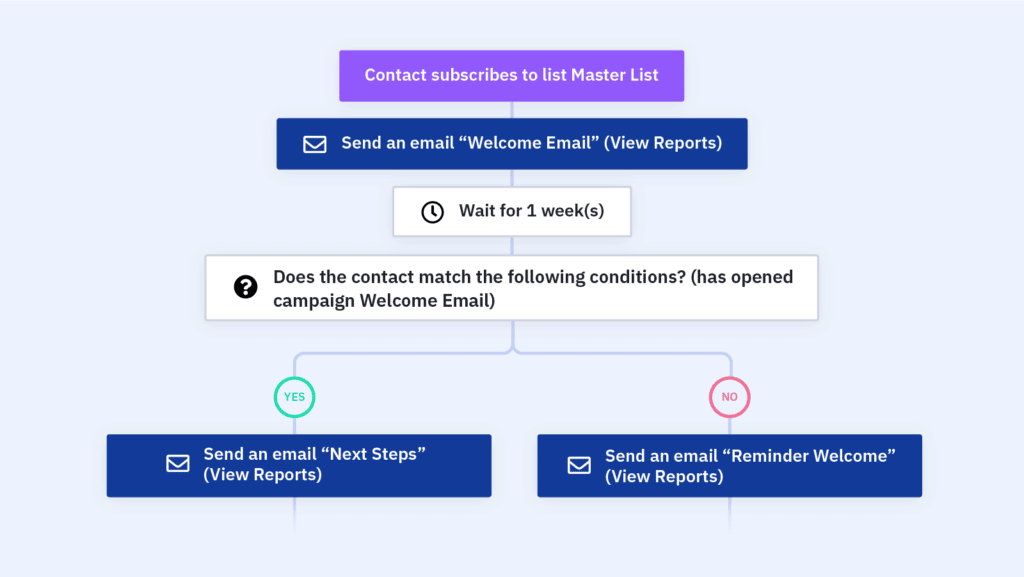
Think of each recipe as a strategy for 1 moment of a customer’s experience. And with dynamic email content, you maximize your efforts to customize each moment for every subscriber.
Frequently Asked Questions
Should I turn off dynamic email?
Generally speaking, no. Dynamic email is a powerful way to connect with different customer segments while still retaining a certain degree of email automation.
Is dynamic email safe?
By and large, yes. You are somewhat at risk of sending the wrong content to certain segments if your dynamic email settings aren’t set up correctly.
But dynamic email itself is safe.
How do I send a dynamic email?
To send a dynamic email, you’ll need to jump into your email marketing platform and follow the specific instructions there.
Before you start, ensure you have prepared the different email content you’d like to send, so you can easily upload or copy and paste it into your email platform.
What does it mean to enable dynamic email?
Dynamic email allows you to send content based on audience segments rather than sending the same email to everyone.
Enabling dynamic email is the process that makes this kind of marketing possible.
Try Dynamic Content in Your Next Email Marketing Campaign
Dynamic email content delivers relevant content to your subscribers’ inboxes. With more personalized emails, you increase the level of engagement from your audience. Your team can nurture the brand relationship and close more sales for your business. Get fresh ideas on how to use this in your emails.

